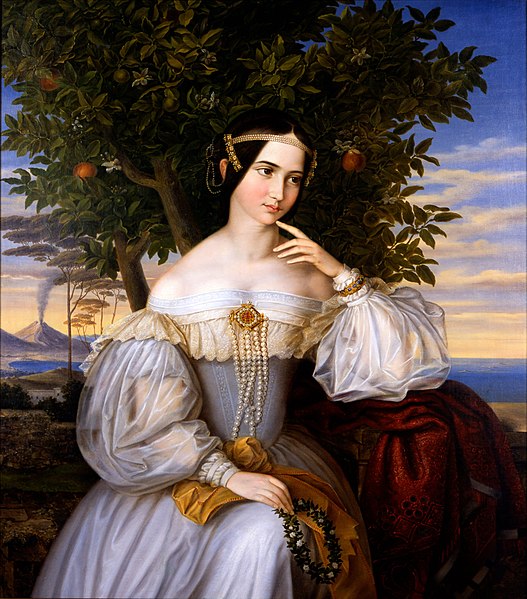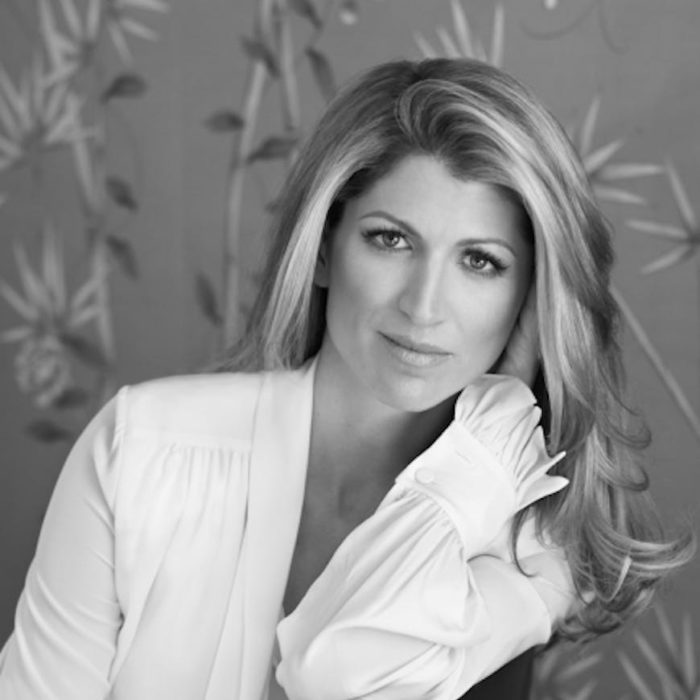by Natalie Livingstone
The more I investigated, the more I was astounded by the range and scale of the Rothschild women’s achievements. They had choreographed electoral campaigns, witnessed revolutions, and traded on the Stock Exchange. They had advised prime ministers, played a pivotal role in the civil rights campaign that led to the election of Britain’s first Jewish MP, and written landmark works of feminist art criticism. One scandalized the world of women’s tennis by introducing the overarm serve; one shocked her own family by becoming rather too deeply involved in the mid-century demimonde of Manhattan jazz cafes and nightclubs; one reared foxes and kept fleas in bags on the end her bedposts, describing the pleasure of examining them under a microscope as ‘better than marijuana’. The Rothschild women had recorded their thoughts and experiences in newspaper columns and in memoirs, in sparkling letters, short stories and painfully honest private journals. They had their own archives, their own culture and community, their own achievements. They were not just a female counterpart to a male line of Rothschilds: they were a dynasty of their own.

Artist: Moritz Daniel Oppenheim
This image is in the public domain via Wikicommons.
The story of that dynasty begins, like that of the male one, in Frankfurt’s Jewish ghetto, and plays out across the banking capitals of Europe. But it is not the same story. From the beginning, the women’s experience was markedly different from that of their brothers, fathers, and husbands. Close enough to touch power but unable to embrace it; informed and talented enough to write books, but not free to publish under their own names; members of the world’s wealthiest family, but with little or no disposable income of their own. Yet with intelligence, determination, and sheer bloody-mindedness, they shaped history. The family’s own past was marshaled against them, as a way of reinforcing expectations. During her later life, Gutle, the founding Rothschild matriarch, came to be mythologized as a pious, frugal, self-sacrificing woman who refused to leave the family home on the Judengasse—her ‘humble hut’—despite the wealth and power of her sons. It was a myth deliberately shaped by the male line, who sought to turn their ancestor into an ideal of Rothschild womanhood: industrious, dutiful, and fertile.
Up to a point, the women of the family fulfilled this role. Rarely did they rebel outright against the expectations that accompanied their position. As Miriam observed in her essay, ‘there was no Rosa Luxemburg, Emma Goldman, Golda Meir or even Lily Montefiore among them.’ As German Jews in a Christian society and women within a fiercely patriarchal family, they trod with care. Quietly, cautiously, across the generations, they managed to build new paths, expanding for their daughters and granddaughters the range of pursuits, attitudes, and life choices available to a Rothschild woman. Theirs is not a story of outright conflict and contention, but of delicate and sometimes difficult negotiations—between creativity and conformity, defiance and compromise, between family responsibility and the fulfillment of personal potential.
Their wealth could not shield them from the full scope of human suffering. Illness, heartbreak, and persecution are leitmotifs in many of their lives, as were other injustices familiar from the biographies of most remarkable women: achievements overlooked, ideas uncredited, and potential untapped. The very name ‘Rothschild’ was a source of anxiety. Some lost it through marriage, but retained a strong identification with their birth family; others were born without it, but obliged by marriage to construct themselves a life and identity as a Rothschild. Women who married outside of the name found themselves suddenly cut off from their birth family and distrusted as potential business competitors. Those whose name was protected through an arranged marriage with a Rothschild cousin were often shipped off to another branch of the family, in another country, where they had to learn a new language and culture. Some thrived in such conditions: Charlotte de Rothschild, who spent her childhood between Frankfurt and Naples, became a figurehead of the English Rothschild family after her marriage to her cousin Lionel, and a Victorian hostess whose invitations were said to be more popular than the Queen’s. Others struggled. Identity is never clear-cut or binary, and the lives explored in the following chapters contain many fraught and fascinating identities, complicated by name and nationality, by gender and sexuality and religion.
In the nineteenth century, Rothschild women were doubly isolated: from Christian society, as Jews; and from the male culture of their own family, as women. So they socialized together, and often arranged their lives so that they could live near one another. They wrote endless letters. ‘We Rothschilds are inveterate scribblers,’ wrote one. Any historian who has spent time looking through the family papers will agree: the archive of one of the family’s most enthusiastic letter writers includes hundreds of letters every year through the mid-Victorian period, and that of its most prolific diarist includes tens of volumes spanning more than fifty years, each one crammed with minuscule script. Such writing gives a fascinating insight into who the women were and what drove them, and shows the process by which they came to form the community that Miriam Rothschild called ‘a parallel but separate little world’.
Any attempt to write a comprehensive history of that ‘little world’ would be doomed from the start. Such an undertaking would be doomed from the start. Everywhere the family established banks—in the five cities of Paris, Vienna, Naples, Frankfurt, and London—there were communities of Rothschild women, and within each of those communities, there were many different friendships, cliques, and families. During the twentieth century, as the bank’s wealth and its authority within the family declined, the women moved further afield and pursued an even broader range of lives.
The Women of Rothschild plots a course through one line of Rothschild women within the English branch of the family, from the dawn of the nineteenth century to the early years of the twenty-first. Even focusing on this single branch of the family, there are still many women whom I regret not being able to include because of limitations of space or source material (many of the women’s archives have been depleted by loss or purposeful destruction). I can only hope that hearing the extraordinary tales of this selection of Rothschild women will inspire further historians to retrieve some of the many other Rothschild lives that are yet to receive their due.
Though the women in this book were all defined by their connection to the English branch of the family, their story stretches far beyond England. It spans from the East End of London to the eastern seaboard of the United States, from Spitalfields to Scottish castles, from Bletchley Park to Buchenwald, and from the Vatican to Palestine. The cast embraces Rossini and Mendelssohn, Disraeli, Gladstone and Chaim Weizmann; it includes amphetamine dealers, Queen Victoria, temperance campaigners, and Albert Einstein. The lives of the subjects span vastly different times and places. Mayer Amschel’s will of 1812, forbidding any female involvement in the banking business, bore little relation to his twentieth-century descendants, when Nica Rothschild flew planes, fought with the Free French, and drag-raced Miles Davis across Manhattan.
The Rothschild women tell a history of art, culture, politics, and money in Europe as seen by people who were in the room but who themselves often went unseen. Theirs is not a story of angels or martyrs. Alongside acts marked by bravery, imagination, and intelligence are those marred by deceit, ignorance, and entitlement. They were misfits and conformists, conservatives and idealists, performers and introverts. But they were bound by the name, by a set of expectations as well as privileges, and by a profound sense of exclusion from the male and Christian world around them. By drawing attention to them, I hope both to help illuminate some of the overlooked sources of power, strength, and imagination in European history, and to give these complicated, privileged, and gifted women a little of the prominence they have so long deserved.
Copyright © 2022 by Natalie Livingstone. All rights reserved.

Natalie Livingstone was born and raised in London. She graduated with a first class degree in history from Christ’s College, Cambridge in 1998. She began her career as a feature writer at the Daily Express and now contributes to Tatler, Harper’s Bazaar, US Vogue, Elle, The Times, and The Mail on Sunday. Natalie lives in London with her husband and three children. She is the author of The Mistresses of Cliveden and The Women of Rothschild.
